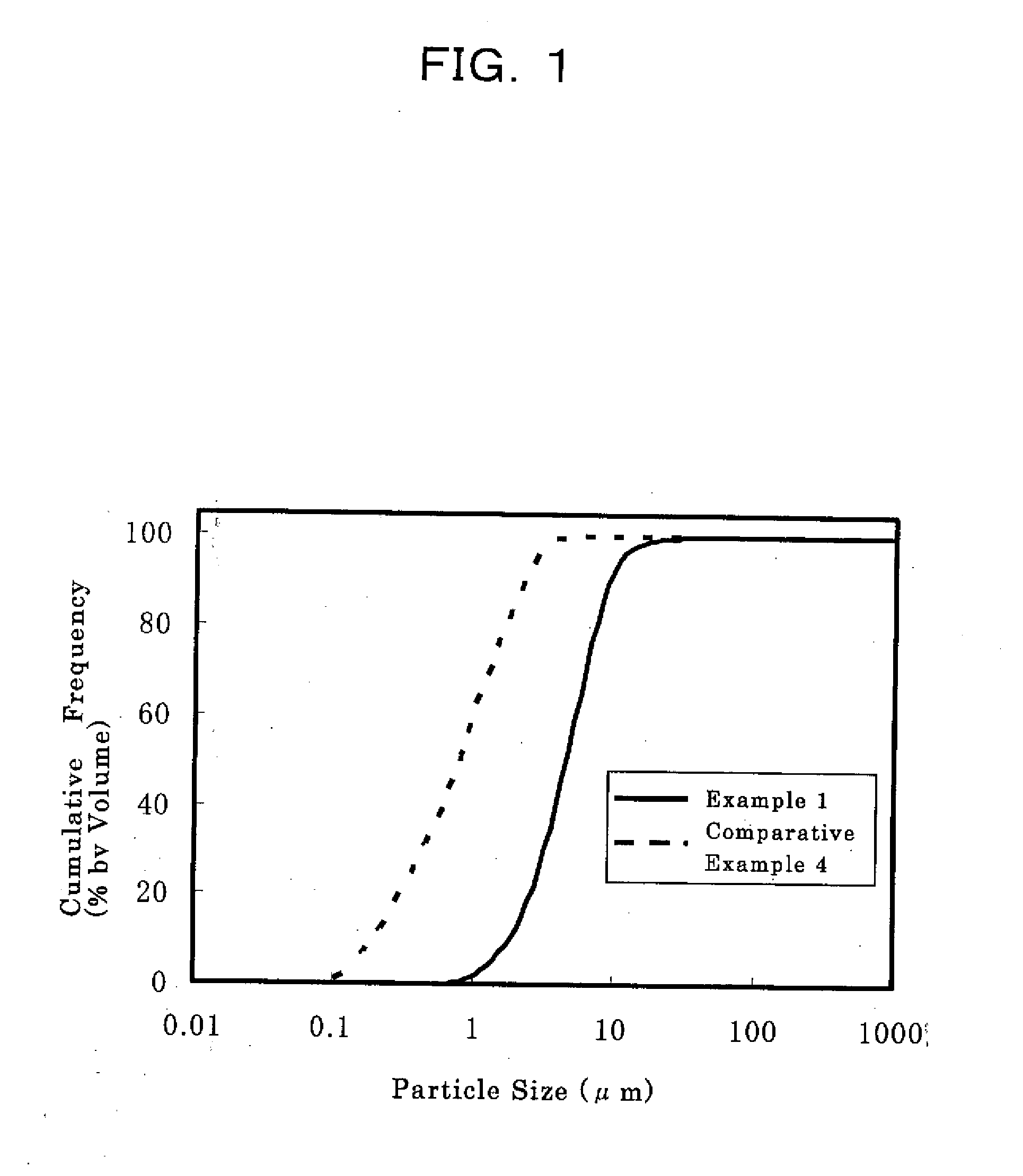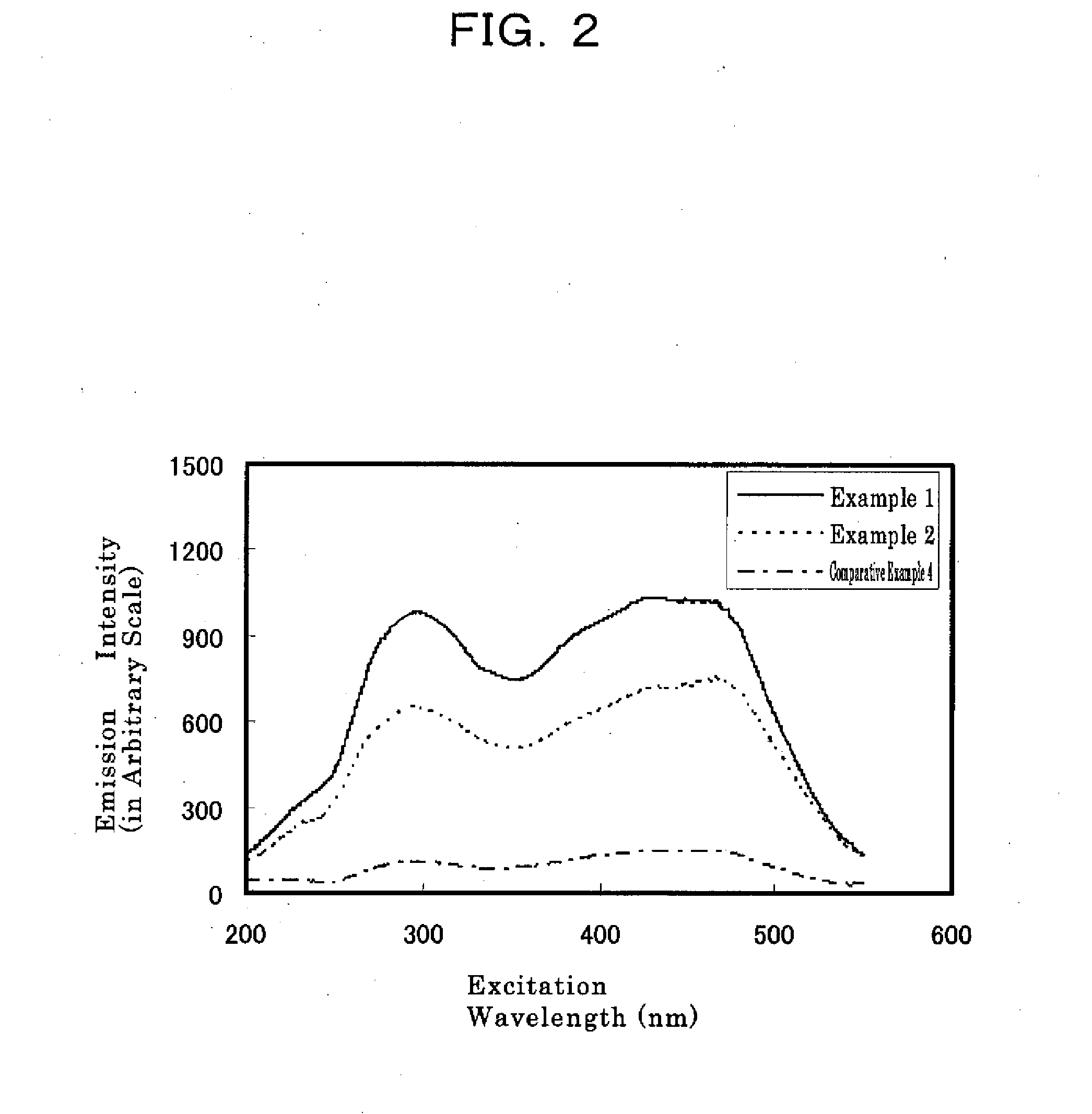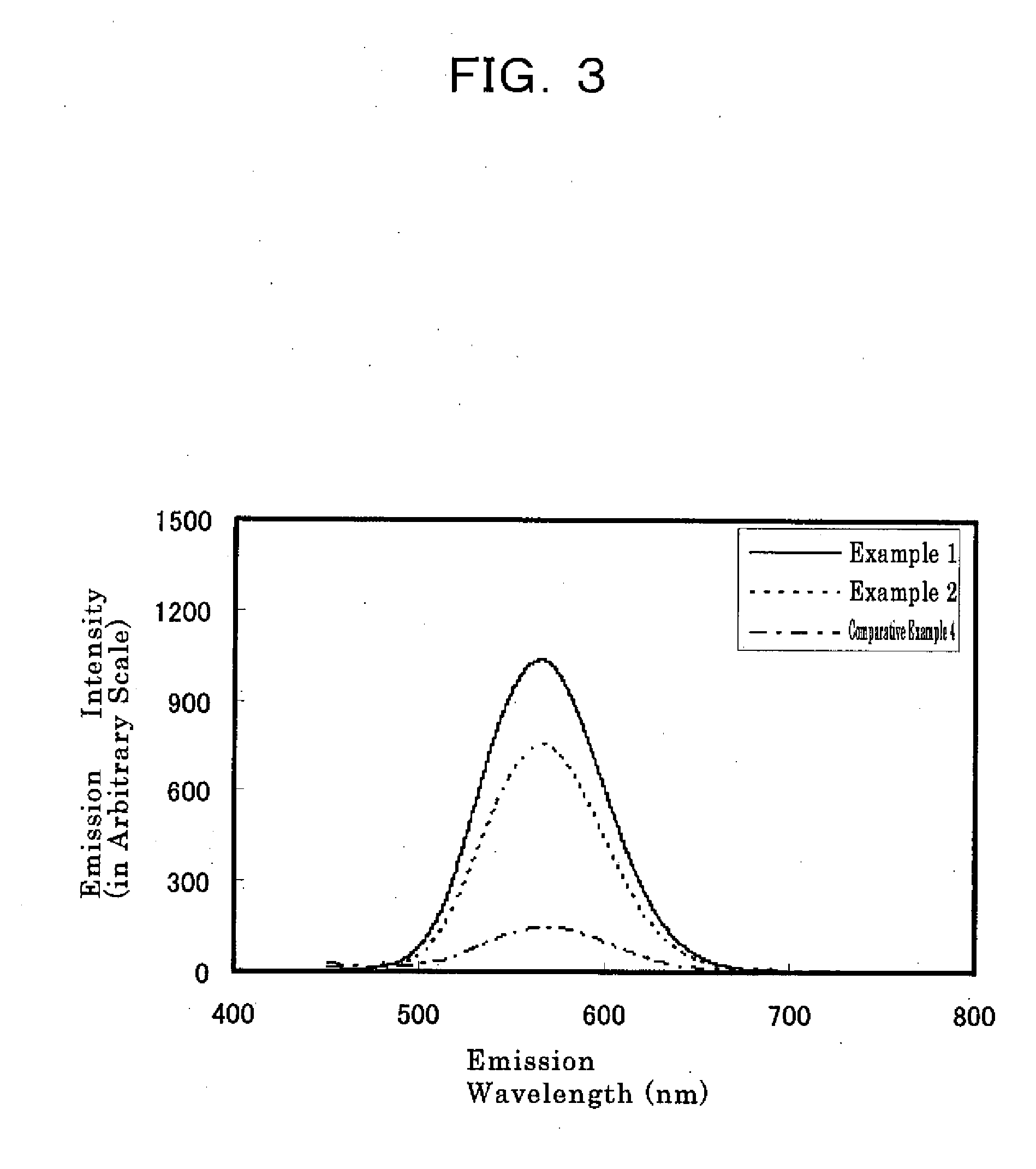Alpha-Siaion Powder and Method for Producing the Same
a technology of siaion powder and alpha-siaion powder, which is applied in the field of sialon powder, can solve the problems of difficult to yield a single phase product, difficult to control composition and granular size strictly, and increase the chances of impurities entering the individual particle surface, and achieve excellent phosphor material
- Summary
- Abstract
- Description
- Claims
- Application Information
AI Technical Summary
Benefits of technology
Problems solved by technology
Method used
Image
Examples
example 1
[0056] In Example 1, the source material powders used to prepare an α-sialon powder were (a) silicon nitride powder (made by Ube Kosan as of grade E10), (b) aluminum nitride powder (made by Tokuyama as of F grade), (c) calcium carbonate powder (made by Kanto Kagaku as of reagent chemical) and (d) europium oxide powder (made by Shin-Etsu Kagaku Kogyo as of grade RU). They were mixed together at a proportion of (a) silicon nitride (Si3N4):(b) aluminum nitride (AlN) (c) calcium carbonate (CaCO3):(d) europium oxide (Eu2O3)=52.3:36.2:10.9:0.6 (molar ratio) by wet ball mill mixing in an ethanol by a pot of silicon nitride material and balls for a time period of 1 hour, then filtered and dried to obtain a mixed powder.
[0057] The mixed powder in an amount of 25 grams was loaded into a crucible made of boron nitride and having an inner diameter of 50 mm and a height of 40 mm and was then lightly tapped. The mixed powder at this time had a bulk density of 0.45 g / cm3 found from the loading he...
example 2
[0060] In Example 2, an amount of 25 grams of the same source material powders as used in Example 1 was uniaxially pressed in a mold having an inner diameter of 40 mm under a pressure of 20 MPa to give rise to a formed body having a bulk density of 1.2 g / cm3. The formed body was then loaded in the same crucible as in Example 1 and heated there under the same conditions as in Example 1. The formed body after the heating had a bulk density of 1.4 g / cm3 and were thus somewhat densified from before it was heated. As the same in Example 1, a product thus obtained was disintegrated by a mortar into particles which were passed through a sieve with an aperture of 45 μm to obtain a synthetic powder. The product in Example 2 was somewhat worse in crushability than that in Example 1.
[0061] The crystalline phase of the Example 2 product according to its XRD measurement was a single α-sialon phase. The α-sialon powder in Example 2 according to its particle size distribution measurement had an a...
PUM
| Property | Measurement | Unit |
|---|---|---|
| density | aaaaa | aaaaa |
| particle sizes | aaaaa | aaaaa |
| particle sizes | aaaaa | aaaaa |
Abstract
Description
Claims
Application Information
 Login to View More
Login to View More - R&D
- Intellectual Property
- Life Sciences
- Materials
- Tech Scout
- Unparalleled Data Quality
- Higher Quality Content
- 60% Fewer Hallucinations
Browse by: Latest US Patents, China's latest patents, Technical Efficacy Thesaurus, Application Domain, Technology Topic, Popular Technical Reports.
© 2025 PatSnap. All rights reserved.Legal|Privacy policy|Modern Slavery Act Transparency Statement|Sitemap|About US| Contact US: help@patsnap.com



